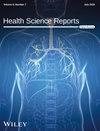Relationship Between the Socio-Demographic Index and the Burden of Depressive Disorders in Asia (2010–2021): A Population Based Study
Abstract
Background and Aims
Depressive disorders represent a prevalent mental health challenge, posing a substantial threat to individuals' well-being. This study aimed to explore the burden of depressive disorders in Asia from 2010 to 2021.
Methods
This study leverages population-based data from the Global Burden of Disease Study in 2021. Metrics such as prevalence, incidence, and Disability-Adjusted Life Years (DALYs) per 100,000 people were calculated using age-standardized rates (ASR) with 95% uncertainty intervals (UI). The study also investigated the association between Socio-Demographic Index (SDI) and the burden of depressive disorders using Pearson correlation analysis.
Results
In 2021, Palestine exhibited the highest Age-Standardized Incidence Rate(ASIR) (9361.0 per 100,000), Age-Specific Prevalence Rate (ASPR) (7348.5 per 100,000), and Age-Standardized DALYs Rate (ASDR) (1375.1 per 100,000). The highest percentage increase in 2010–2021 for ASIR (47%) and for ASDR (31%) was related to Myanmar, and ASPR (27%) was related to Tunisia. Notably, across all age groups, ASDR, ASIR, and ASPR were consistently higher in women compared to men. The results of Pearson analysis showed that there was a negative correlation between ASPR (r = −0.228), ASDR (r = −0.232), and ASIR (r = −0.227) indices with the SDI index, but this correlation was not statistically significant(p > 0.05).
Conclusion
The findings highlight a disproportionately high burden of depressive disorders in South Asia, particularly in countries like Palestine and Iraq, where rising trends in DALYs and prevalence demand urgent attention. The significant negative correlation between ASPR and SDI suggests that lower socioeconomic development may exacerbate depressive disorders, even as higher-SDI countries face their own mental health challenges.


 求助内容:
求助内容: 应助结果提醒方式:
应助结果提醒方式:


